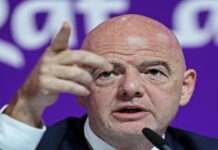There’s plenty of room for disagreement about what the Democratic National Committee should have done differently in organizing the party’s second primary debate. But there should be no dispute about the fact that it should have done something to keep the debate’s first night from being the waste of time that it was.
The point of a primary debate is to winnow the field — to give voters a chance to begin making up their minds about which ideas the party should champion and which man or woman should make the case for those ideas against the other party’s standard-bearer. But that process can only take place if there’s some coincidence between the appeal of competing ideological visions and the charisma of the candidates. That coincidence was utterly lacking on Tuesday night in Detroit.
What viewers saw on the screens was a fairly evenly matched ideological battle between two fiery progressives (Sens. Elizabeth Warren of Massachusetts and Bernie Sanders of Vermont) and several cautious moderates (Minnesota Sen. Amy Klobuchar, Montana Gov. Steve Bullock, Maryland Rep. John Delaney, Ohio Rep. Tim Ryan, and Colorado Gov. John Hickenlooper), with a couple of other guys trying to position themselves between the two camps (South Bend Mayor Pete Buttigieg and former Texas Rep. Beto O’Rourke), and a New Age guru adding a comment about dark psychic forces every now and then (author Marianne Williamson).
Described that way, it sounds like a productive event. But there was a big problem: The two candidates furthest to the left are polling at a combined 30.2 percent. The five moderates, by contrast, come in with a grand total of just 3.2 percent. That’s right: Two of the five (Ryan and Bullock) are polling so low that their average rounds down to zero (0.3 percent each), while Klobuchar leads the pack with 1.2 percent.
It would be one thing if those numbers told us something useful about the ideological commitments of the Democratic electorate: it would signal that the party was firmly committed to nominating a solidly left-wing candidate to take on Donald Trump in November 2020. The only question would be whether Warren or Sanders would be the one to get the nod.
But of course that isn’t at all the state of play among rank-and-file Democrats. Joe Biden, who will be appearing on stage on Wednesday night, has been in the lead since he declared his candidacy. He’s had some ups and downs and still has vulnerabilities. But his polling average is currently 32 percent in a field of 20, which places him nearly two points ahead of the combined total of the candidates running in second and third place, who happen to be the progressives Warren and Sanders.
That’s a picture of a party deeply divided about just about everything except the moral character of the current president. Those sharp differences were boldly displayed on the debate stage Tuesday night — on health care, immigration, trade, taxes, climate change, foreign policy, and much else. What wasn’t resolved one bit is which candidate should become the party’s nominee. That’s because none of the candidates making the moderate side of the argument had any shot at all of actually winning the party’s nomination. The guy most likely to do that will be on stage on Wednesday, where he won’t be facing either of the two leading progressive options.
This is a joke. Just as Donald Trump proved that the Republican National Committee was toothless to stop his march toward the nomination, so the DNC is now proving that it has no idea how to act like a party (as opposed to a third-rate event planner). Fine, let 20 hopefuls crowd the stage over two nights in June, so the party looks like it’s giving everyone a fair shake. But to do the same thing again in July? Why? Because justice demands Hickenlooper, Delaney, and Ryan be given a second shot to ascend to 1 percent?
Even if the Democratic Party feels it simply must prove its commitment to allowing the dozen or so candidates inhabiting the polling basement to try to increase their national name recognition for a little bit longer, why not at least do what the RNC did in 2016 and divide the debates into A-list and B-list options. Then viewers could actually get a chance to see the six leading candidates (Biden, Sanders, Warren, Harris, Buttigieg, and O’Rourke) — those polling above 2.8 percent (!) — together on one stage, facing each other head-to-head. The other 14 (at 2 percent and below) could debate each other at another event to see if any of them can break out, earning the right to move up to the big leagues the next time around.
But no. Instead, we get a random mixture of giants and dwarfs on consecutive nights, hashing out the party’s disagreements but doing nothing at all to settle the overriding question of which person should be the party’s nominee for president. Why did they even bother?
It was another squandered opportunity for the Democrats. Let’s hope it’s the last.

















